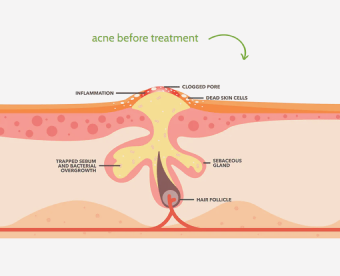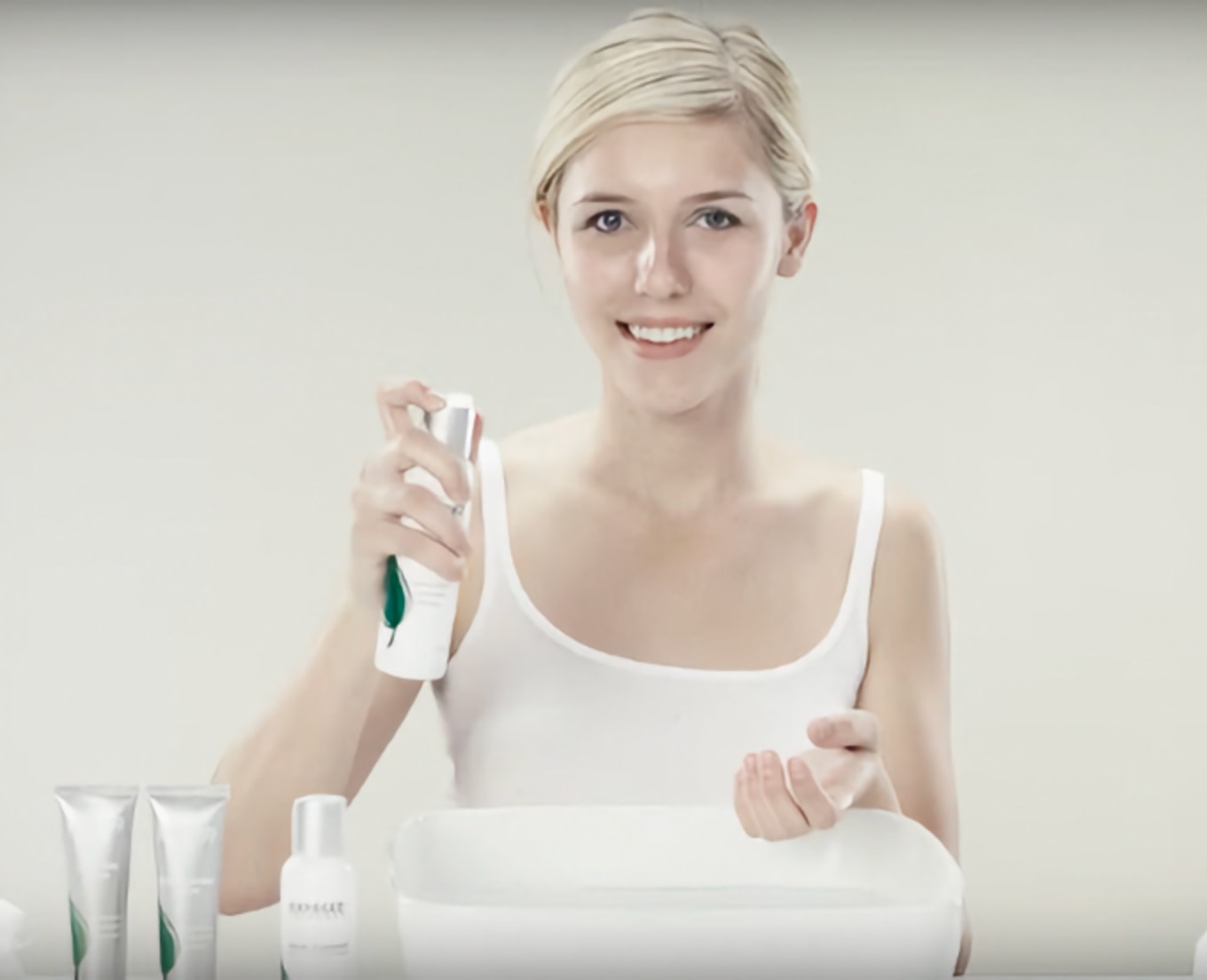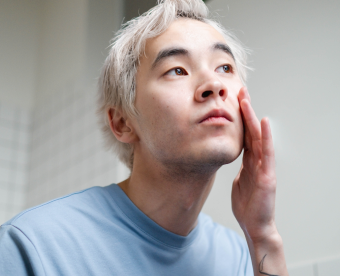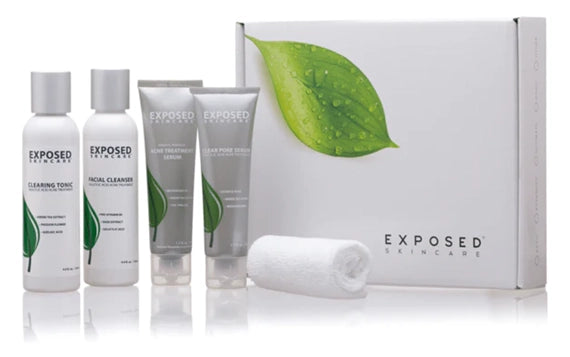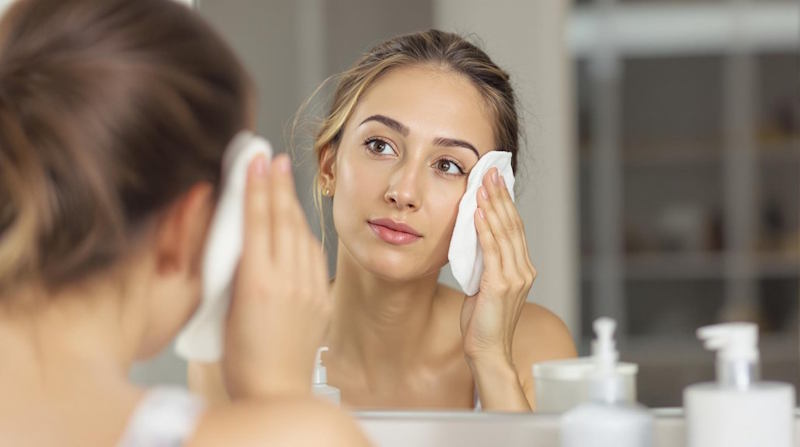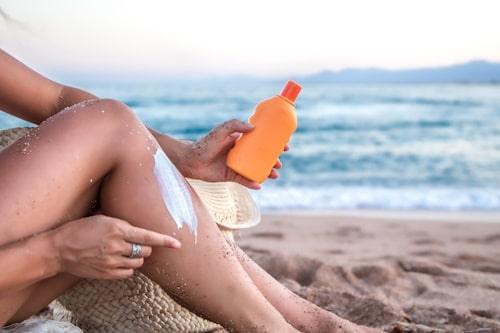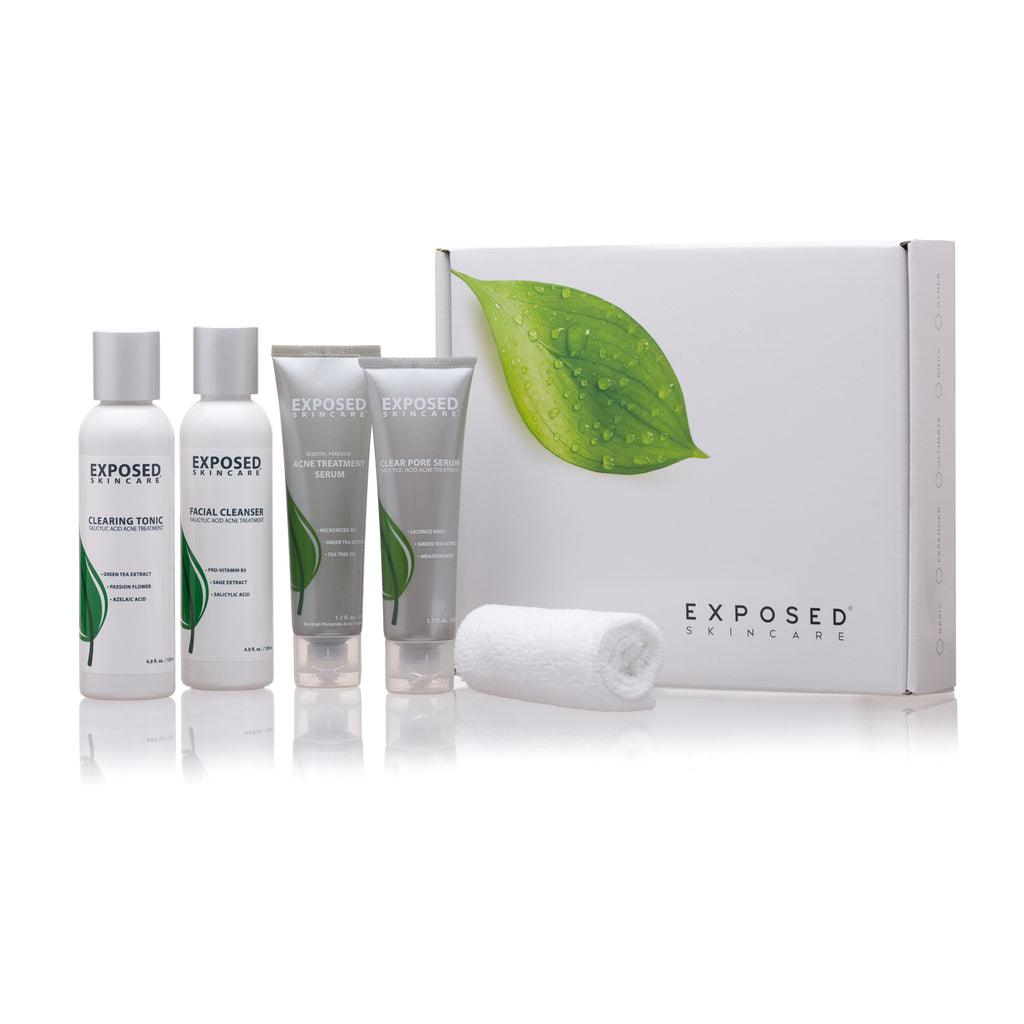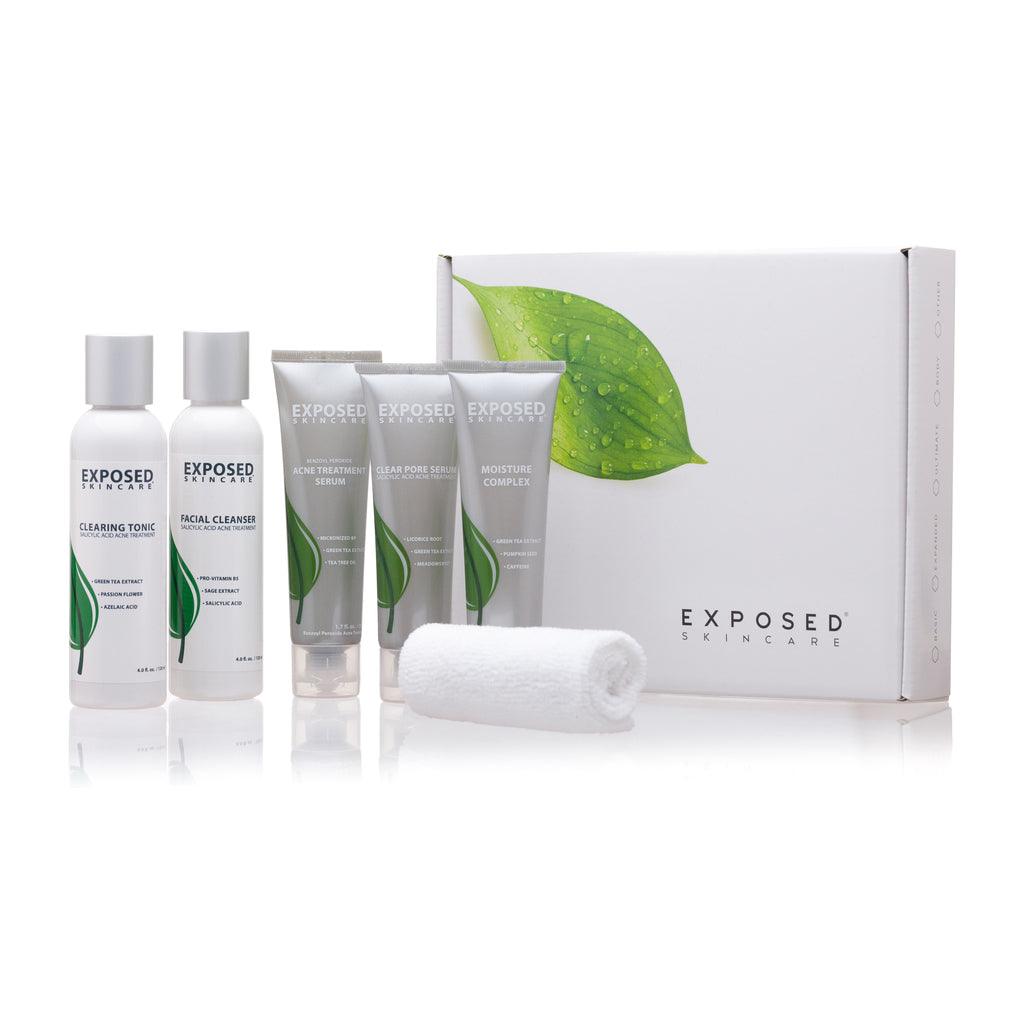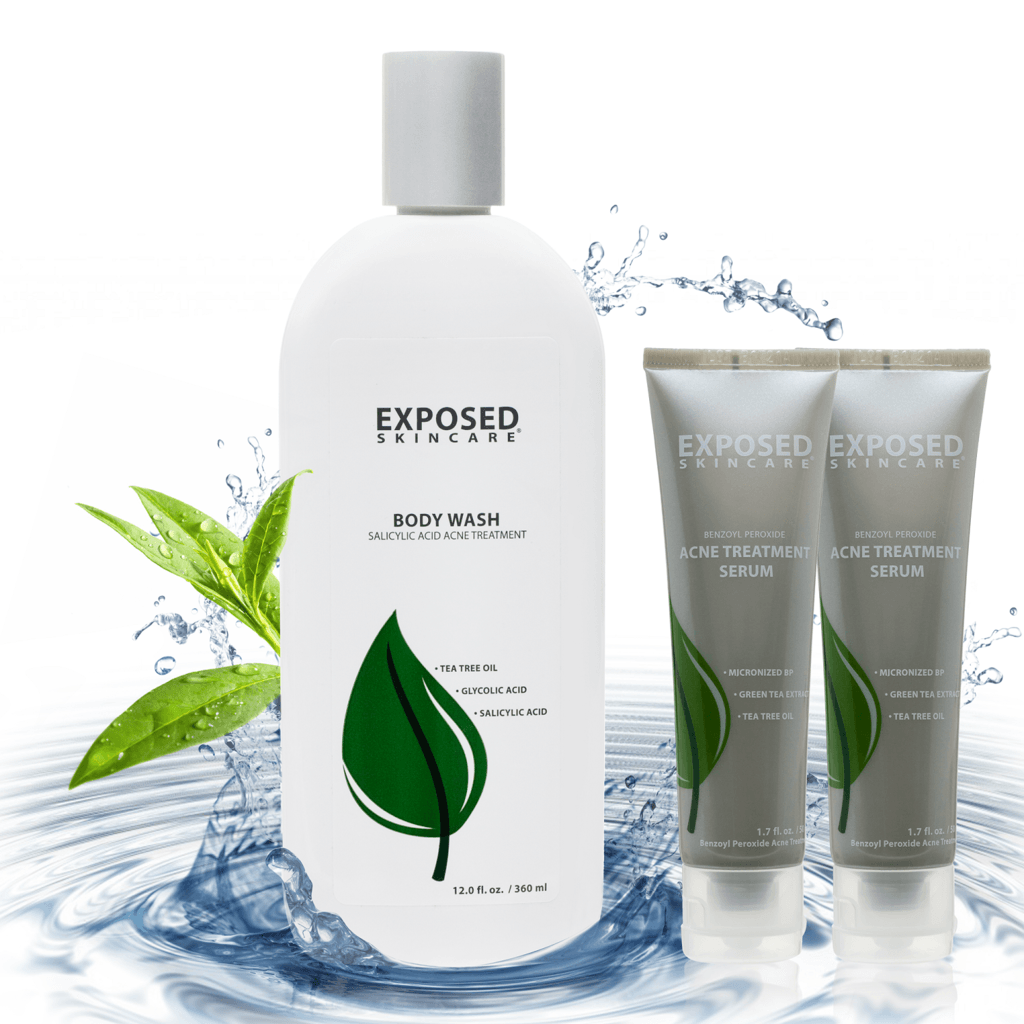Turmeric's anti-inflammatory powers are legit, but don't slap it on your face and expect miracles. While curcumin fights redness and bacteria, it can't tackle clogged pores, excess oil, or hormonal triggers on its own. That's where Exposed skincare comes in—it strategically pairs turmeric with pore-clearing salicylic acid and bacteria-fighting ingredients. This tag-team approach addresses all four acne drivers instead of just one. The science behind this combo tells the real story.
Biggest Takeaways
- Turmeric contains curcumin which has proven anti-inflammatory properties that can reduce acne redness and fight acne-causing bacteria.
- Using turmeric alone is ineffective for acne as it doesn't address oil production, clogged pores, or exfoliation needs.
- Exposed Skincare enhances turmeric's benefits by combining it with salicylic acid to unclog pores and combat bacteria.
- Clinical testing shows faster acne clearance when turmeric is used within the Exposed product regimen.
- For optimal results, use a DIY turmeric mask 1-2 times weekly after cleansing but before applying Exposed toners and serums.
The Science Behind Turmeric's Anti-Inflammatory Properties

While the beauty world seems to love slapping the word "miracle" on everything from bee venom to snail mucus, turmeric's anti-inflammatory powers actually have some serious science backing them up.
When you're looking at turmeric for acne, what you're really talking about is curcumin—the active compound that does the heavy lifting. This yellow powerhouse literally shuts down inflammatory enzymes like COX-2 and LOX that make your zits red and angry. It's not just feel-good wellness fluff.
Research shows curcumin actually inhibits those pesky Cutibacterium acnes bacteria while simultaneously blocking pro-inflammatory cytokines.
Translation: it fights both the bacteria and the swelling they cause. Plus, its antioxidant properties neutralize free radicals, giving your skin extra defense against breakout triggers.
Why Turmeric Alone Falls Short in Clearing Acne
Despite turmeric's impressive anti-inflammatory credentials, let's get real about something: slapping some golden spice on your face isn't going to magically clear your acne overnight.
Turmeric might be golden, but it's no miracle cure for your angry red pimples.
While the curcumin in turmeric does have some legit anti-inflammatory powers, it's simply not enough on its own to tackle the multifaceted beast that's acne.
-
Turmeric's curcumin levels in DIY masks are way too low to make meaningful changes to your skin
-
It might calm some redness, but completely ignores excess oil production and clogged pores
-
That golden paste can actually trigger irritation or contact dermatitis in some people (hello, worse breakouts!)
-
You're fundamentally bringing a butter knife to a gunfight—acne requires targeting all four drivers simultaneously
Four Acne Drivers That Turmeric Can't Address By Itself

You've probably noticed that turmeric has earned superfood status in the wellness world, but when it comes to acne, it's bringing a spoon to a knife fight.
Here's the deal: acne isn't just one thing. It's four interconnected problems that turmeric can't tackle alone. While this spice might help with inflammation, it's powerless against hormonal oil production that clogs your pores.
And forget about exfoliation—turmeric won't slough off those dead skin cells trapping bacteria below.
Speaking of bacteria, P. acnes is throwing a party in your pores that turmeric can't shut down completely.
Plus, your diet, stress levels, and face-touching habits? Turmeric doesn't have answers for those either.
It's like using a single puzzle piece and wondering why the picture isn't complete.
How Exposed's Formula Enhances Turmeric's Benefits
Turmeric alone might be like bringing a butter knife to a gunfight, but when it's part of Exposed's formula, it transforms into a legitimate acne-fighting weapon.
It's not magic—it's smart science. The turmeric in Exposed doesn't fly solo; it's backed by a squad of ingredients that amplify what it does best.
-
Salicylic acid teams up with turmeric to unclog those stubborn pores while tackling bacteria—something your DIY face mask can't touch.
-
Their antioxidant blend fights skin stress beyond what turmeric alone could handle.
-
Soothing agents counteract potential irritation, making it work even if your skin throws tantrums.
-
Clinical testing shows this combo clears acne faster than just slapping turmeric paste on your face.
You're not just trying another trendy ingredient—you're getting turmeric that actually works.
Real Results: Before and After Using Turmeric With Exposed

After scrolling through countless Instagram "transformation" posts that look suspiciously filtered, you might wonder if anyone gets actual results from turmeric treatments.
Well, our week-long trial with real people combining turmeric masks with Exposed actually delivered. By day five, users reported noticeably smoother skin and fewer bumps—no filters needed.
The turmeric-honey-Aztec clay combo seriously brightened skin while shrinking active breakouts.
Pro tip: For sensitive areas, swap that intense apple cider vinegar for milk. Works just as well without the sting.
The before-and-after shots showed legitimate improvement in those annoying dark spots, proving turmeric's skin-lightening powers aren't just hype when paired with Exposed's complete system.
The takeaway? Consistent use actually creates healthier skin—but only when you're hitting all four acne drivers simultaneously.
The Complete Routine: Incorporating Turmeric Within Your Exposed Regimen
So those results look promising—but what's the actual game plan for making turmeric work in your daily routine?
Turns out, you can't just slap some spice on your face and call it a day. The magic happens when turmeric's anti-inflammatory superpowers team up with your Exposed products to hit all four acne drivers at once.
-
DIY turmeric mask (1-2x weekly): Mix 1 tsp turmeric powder with honey or yogurt, apply for 15 minutes, then rinse before your Exposed routine
-
Always patch test first—some folks' skin throws a tantrum with turmeric
-
Consistency is key—random application won't cut it when fighting stubborn acne
-
Layer strategically: Use masks after cleansing but before toner and serums for maximum absorption
Remember: Even natural remedies need a game plan. Turmeric plus Exposed equals your skin's new power couple.
Frequently Asked Questions
What Is the Best Way to Use Turmeric for Acne?
You'll get better results mixing turmeric with honey in a mask for 15 minutes, 2-3 times weekly. But for complete acne clearing, you'll need products targeting all four acne drivers.
Why Do I Get Pimples After Using Turmeric?
You're getting pimples because turmeric might be clogging your pores, causing irritation, or triggering an allergic reaction. You need a balanced approach that addresses all four acne drivers simultaneously.
What Are the Disadvantages of Applying Turmeric on the Face?
Trying turmeric topically? Watch for these troubles: yellow skin staining, dryness, irritation, and potential allergic reactions. You're not alone—many face these issues when using pure turmeric without proper formulation.
What Happens if We Apply Turmeric on Our Face Daily?
Daily turmeric application fights acne-causing bacteria and reduces inflammation, but you'll see better results combining it with Exposed's complete system that addresses all four acne drivers simultaneously.
Putting It All Together
You've tried turmeric masks, and funny enough, right when you thought they were working—boom—another breakout. That's no coincidence. Turmeric's anti-inflammatory power is legit, but it's fighting just one corner of a four-sided battle. When you pair it with Exposed's complete system, you're finally addressing everything causing those stubborn breakouts. Don't half-ass your acne treatment—go all in or go home.

